Rhinoplasty: What You Need to Know Before Going Under the Knife
What is it: Rhinoplasty (Nose Job)
Rhinoplasty is a cosmetic surgical procedure altering the nose in shape, size, or appearance; tailored to a patient’s unique facial anatomy and aesthetic goals.
Most of us have wished, at some point, we could change something about our physical appearance. At the top of this desire list is for a more aesthetically pleasing nose.
According to the American Academy of Facial and Plastic Surgeons, rhinoplasty reigns supreme. It was the most performed facial procedure in 2021, surpassing both facelifts and eyelid surgery.
The American Society of Plastic Surgeons’ most recent findings show its popularity surpasses all other cosmetic surgery.
Medical purposes such as correcting a deviated septum complicating breathing, is another reason rhinoplasty’s popularity.
Potential

Achieve the ideal nose:
- Reduce a prominent bump.
- Narrow a bulbous nose.
- Lift a droopy nose.
- Bring down an upturned tipped nose.
- Straighten a crooked bridge.
- Fix asymmetry.
- Balance facial features.
Rhinoplasty surgeons now offer 2D simulations and 3D modeling helping patients visualize potential outcomes and “try on” a new nose during consultation.
Share pictures of desired outcomes with your surgeon, to facilitate a discussion about your goals in line with your facial features and proportions.
Pros and cons of Rhinoplasty
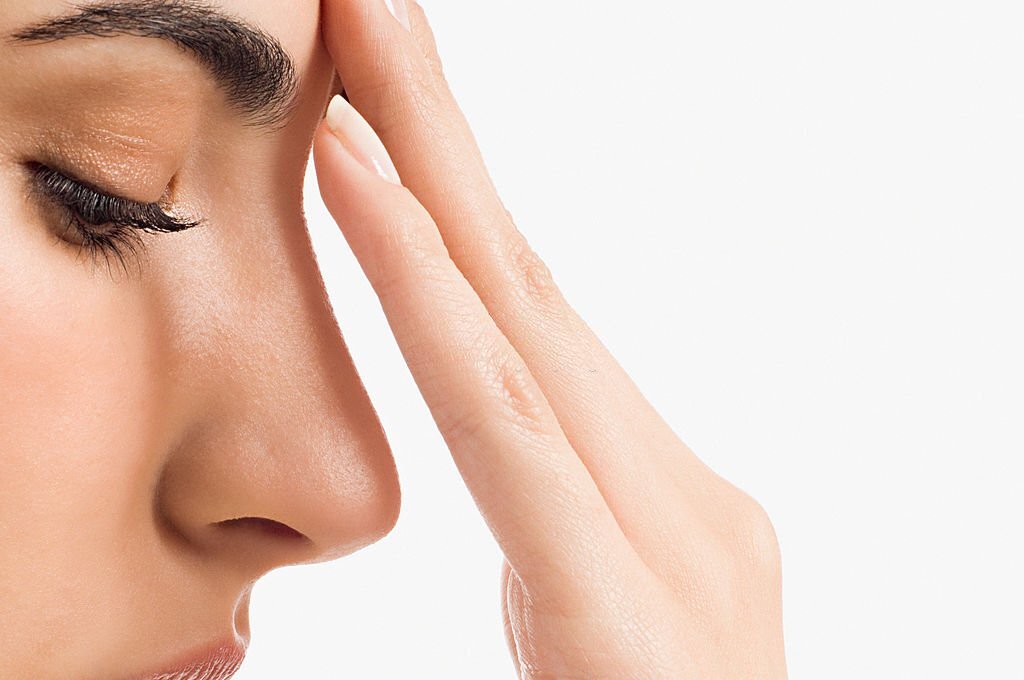
If you’re considering rhinoplasty, it’s essential to weigh the pros and cons before making a decision. Here are some of the advantages and disadvantages of this procedure:
Pros:
- High satisfaction rate: 91% of people undergoing a nose job are pleased with the results.
- Improved self-confidence: Self-conscious about your nose? A nose job can boost your self-esteem.
- Balanced features: Nose reshaping surgery helps balance facial features.
- Outpatient surgery: Rhinoplasty surgery doesn’t require a hospital stay.
- Minimal pain: The procedure is painless, and recovery isn’t too painful either.
- Functional benefits: Rhinoplasty or septorhinoplasty corrects structural issues and resolve breathing problems.
- Cost: Done abroad, rhinoplasty is affordable, averaging $3,500 in Istanbul.
Cons:
- Cost: Rhinoplasty costs in the U.S. average $8,097 and may exceed $30,000.
- Swelling and bruising: Expect for the first two weeks post procedure.
- Side effects: Nausea, vomiting, and sore throats during the first few days.
- Discomfort: Hard cast in week one is uncomfortable, congested nose.
- Time for results: Estimate one year for final results.
- Revision surgery: may be necessary if initial results are unsatisfactory.
Before deciding to undergo rhinoplasty, consult with a board-certified plastic surgeon and carefully consider the potential benefits and procedure drawbacks.
Cost: Understanding the Factors Affecting the Cost of Nose Jobs
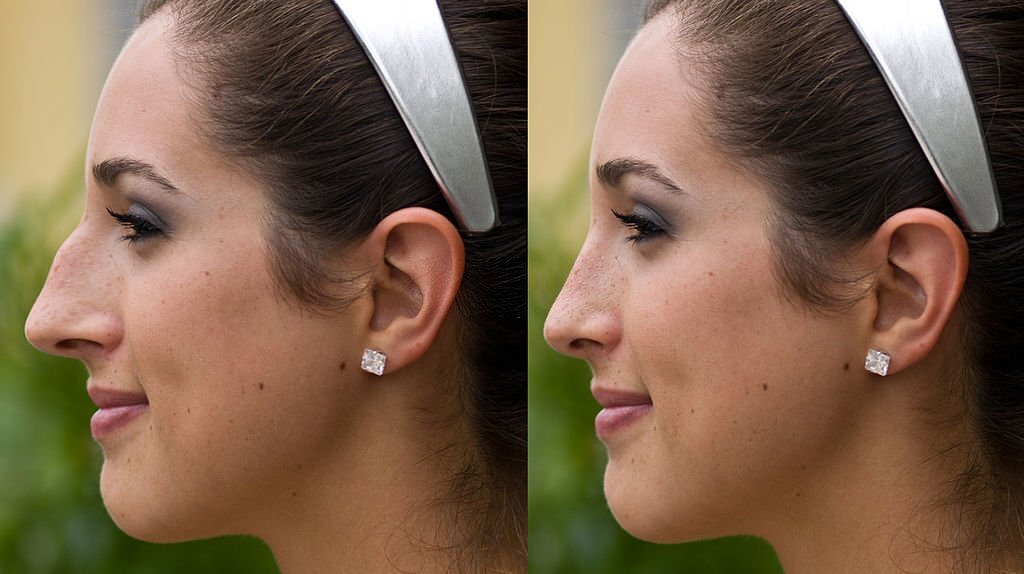
Rhinoplasty costs vary significantly—surgeon’s qualifications, geographic location, surgical facility, and additional expenses area all factors.
The Average Cost of Rhinoplasty in the United States
The American Society of Plastic Surgeons (ASPS) says the average cost of rhinoplasty in the United States is $5,483. However, this figure only represents the surgeon’s fee and does not include facility fees, anesthesia fees, and pre- and post-operative appointments charges.
The true average cost of rhinoplasty in the U.S. is $8,097. This amount includes all related expenses and varies significantly by geographic location and surgeon.
Procedure Complexity
The procedure complexity is another factor affecting cost. In New York City, for example, Dr. Pearlman charges $10,000 to $30,000, depending on complexity.
Boston’s, Dr. Lin, says rhinoplasty prices range from $8,000 to over $20,000. In Chicago, Dr. Mustoe, charges between $9,000 and $15,000.
Expect to pay more for more complicated procedures.
The Cost of Rhinoplasty by Ethnicity
Cost of rhinoplasty also vary by ethnicity. For example, Black patients average $6,900 for rhinoplasty, while those of Asian descent, $7,600. The reasons for these disparities are related to differences in surgical techniques or procedure complexity for different nose shapes.
What Does the Cost of Rhinoplasty Include?
It’s important to understand what the cost of rhinoplasty includes before you undergo the procedure. Count on the following items.
- The consultation
- Surgeon’s fee
- Surgical facility
- Anesthesia fees
- Surgical supplies
- Prescription medications
- Recovery supplies
- Pre- and post-operative appointment fees
What Affects the Cost of Rhinoplasty?
Several factors influence the cost of rhinoplasty, including:
- Surgeon’s qualifications and experience level.
- Procedure complexity.
- Type of anesthesia.
- Complementary procedures.
- Insurance Coverage.
- Where your surgery takes place.
Let's take a closer look at each of these factors.
The best rhinoplasty surgeons are artists. Nose surgery is considered the most difficult, exacting type of facial plastic surgery.
Experienced, board-certified rhinoplasty surgeons or facial plastic surgeons charge more and may help avoid revision surgery costs which average over $10,000.
Pay special attention to a surgeons’ credentials, reviews from other nose job patients, and “before” and “after” galleries.
What percentage of their practice is devoted to nasal surgery? If they don’t perform at least 100 rhinoplasties a year, we don’t recommend letting them near your nose.
The type of anesthesia used during the rhinoplasty procedure affects procedure cost. Most doctors perform rhinoplasty procedures with the patient under general anesthesia, which cost thousands of dollars more than local anesthesia.
However, general anesthesia has some key benefits, including being fully unconscious and having your breathing and blood pressure closely monitored throughout the surgery.
The medical professional who administers your anesthesia impacts your rhinoplasty costs. An anesthesiologist (a medical doctor) charges higher anesthesia fees than a certified registered nurse anesthetist (CRNA).
While both are qualified to administer anesthesia, anesthesiologists have more advanced training, so some surgeons insist on using them.
Many rhinoplasty patients have other facial plastic surgery procedures done during the same operation, such as a chin implant. Having additional procedures can increase the total cost of the operation. However, having them done at the same time can be more cost-effective, as you will only need to pay for the anesthesia and facility fees once. Some surgeons also discount their fee for each additional procedure. Read more about these options at the end of this article.
It is rare for health insurance to cover the cost of rhinoplasty, as it is considered an elective cosmetic procedure.
However, if you have an injury or breathing issues, insurance companies may cover at least a portion of the cost to correct:
- Trauma
- Deviated septum
- Collapsed nasal passage
If your rhinoplasty is paired with a septoplasty to correct documented medical issues, your insurance company will likely cover a portion of these costs. Ask your insurance provider so you can plan for out-of-pocket expenses.
Traveling Abroad Benefits

Looking for a cost-effective way to undergo rhinoplasty? Traveling abroad may be the perfect solution.
In the U.S., Rhinoplasty is expensive, making it challenging for most of us to afford.
Why Turkey is an Attractive Destination for Rhinoplasty Surgery
Rhinoplasty Surgery costs $2,000 – $7,200 in Istanbul whereas in Los Angeles this same treatment cost between $8,000- $18,000.
With more and more people seeking to enhance their appearance, rhinoplasty has become increasingly popular.
Turkey has emerged as a popular destination for rhinoplasty surgery, offering quality treatment at affordable prices.
There are several reasons why Turkey is a top destination for rhinoplasty surgery.
1st: Turkey has a long history of practicing medicine, with highly trained and experienced medical professionals translating into a high standard of care.
2nd: Rhinoplasty surgery in Turkey cost significantly less than the same procedure in the US, UK and Australia. Save up to 70%, without compromising quality.
3rd: Turkey’s rich history, offers patients a chance to combine surgery with a holiday.
Istanbul is a mecca for cosmetic surgeries due to its affordability, highly professional and developed industry, designed to service the world’s cosmetic surgery needs.
Why plastic surgery is much cheaper in Turkey:
- Lower Operating Costs: Rent, utilities, and supplies, are much lower in Istanbul.
- Lower Labor Costs for medical professionals and operating room staff.
- Lower Marketing and Advertising Costs: Lower spend results in lower prices.
- Lower Malpractice Insurance Costs keep plastic surgery costs down.
- Fierce Competition among plastic surgeons in Istanbul, results in lower prices.
- Favorable exchange Rate: Each US dollar or Euro exchanges for 20 Turkish Lira.
Choosing a Surgeon in Turkey
When considering rhinoplasty in Turkey, choose a reputable and experienced surgeon. One way to ensure this is by looking for certification from reputable organizations:
Research the surgeon’s experience, qualifications, and reviews from previous patients.
What Makes a Good Candidate?
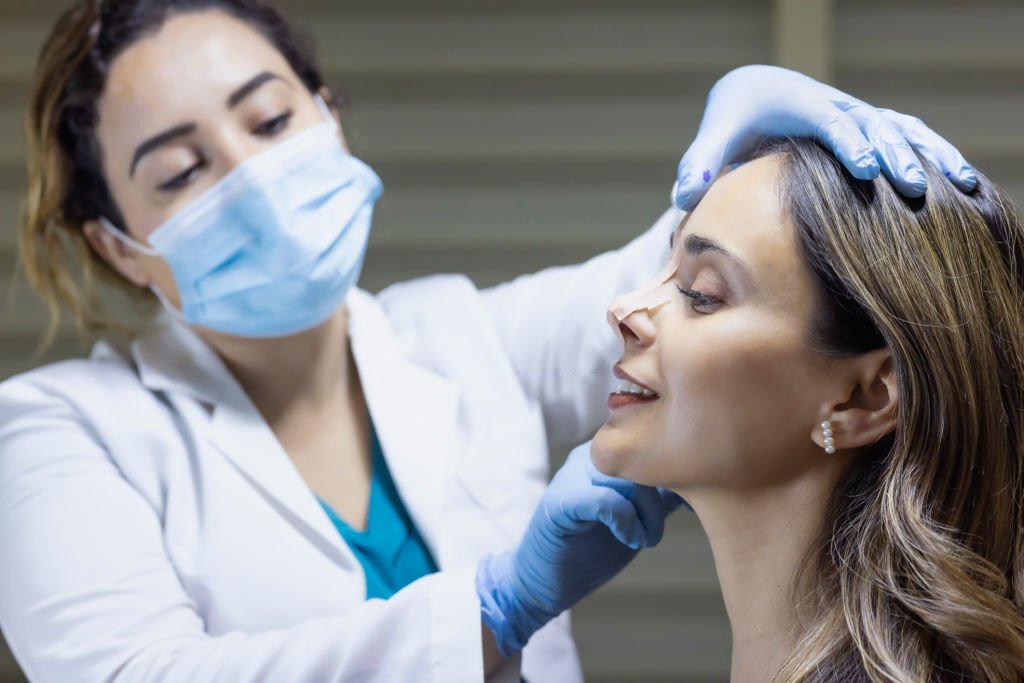
If you’re considering rhinoplasty, consider cosmetic and structural issues you want to address, your budget, and recovery time away from work.
This is what makes a good candidate for nose job surgery:
Age Requirements for Nose Job Surgery
Before undergoing rhinoplasty, girls must be at least 15 years old and boys, 16 to give time for facial features to reach maturity.
There’s no upper age limit for rhinoplasty, as long health isn’t an issue. Safety risks associated with surgery in older patients require a more detailed medical history and a more rigorous health screening.
Body Dysmorphic Disorder and Rhinoplasty
A study published in Plastic and Reconstructive Surgery in 2011 found that 33% of patients seeking rhinoplasty, displayed symptoms of body dysmorphic disorder (BDD), an obsessive-compulsive disorder in which negative thoughts about a physical feature (e.g., nose) interferes with a person’s quality of life.
A follow-up study published in 2013 revealed a strong correlation between pre-operative symptoms of BDD and patient dissatisfaction with surgical results.
If you’re obsessed with having the perfect nose and think you may have untreated BDD, understand, surgery may not alleviate the issue.
Base your decision to undergo nose job surgery on your desired outcome, overall health, and available budget.
Consult with a qualified, experienced surgeon to provide custom recommendations fitting your unique situation.
Preparing for Rhinoplasty Surgery: Tips for a Speedy Recovery
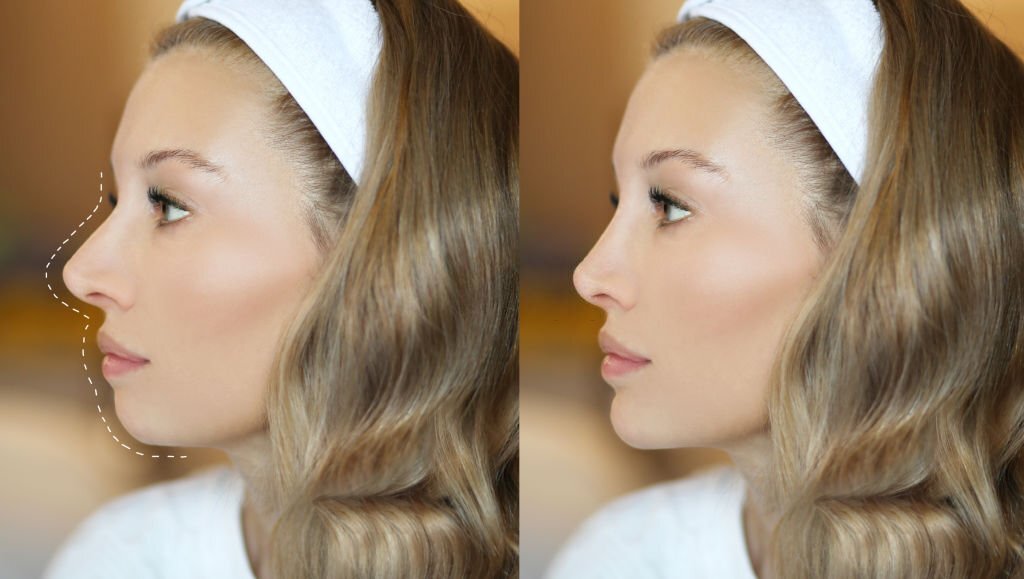
Like any surgical procedure, rhinoplasty requires preparation to facilitate recovery and optimize results. Here are some tips on how to prepare for rhinoplasty surgery and reduce post-surgery swelling and bruising.
Stop Taking Blood Thinners and Other Medications
Before rhinoplasty surgery, consult with your plastic surgeon and ask for a detailed list of medications to avoid.
Blood thinners (aspirin, ibuprofen, non-steroidal, anti-inflammatory drugs) can cause bleeding during and after surgery, prolonging recovery time. Your surgeon may recommend pain relievers such as Tylenol.
Consider Using Arnica or Bromelain
Taking natural supplements like arnica or bromelain post-surgery, may reduce bruising and inflammation. Arnica is an herbal supplement used to treat bruises and swelling, while bromelain is an enzyme possessing anti-inflammatory properties.
Consult with your surgeon before taking any supplements, as they may interact with other medications or cause allergic reactions.
Stop Smoking
Smoking interferes with your body’s natural healing process and increase complication risk. Stop smoking for six weeks before and after your rhinoplasty surgery.
Avoid Alcohol
Alcohol increases swelling and interferes with anesthesia. Avoid alcohol for at least 48 hours before and two weeks after surgery.
Discuss Supplements with Your Provider
Fish oils or vitamin E can interfere with blood clotting or cause excessive bleeding, delaying recovery time.
Avoid Neomycin Containing Antibiotic Ointments
While antibiotic ointments may help prevent infection, products containing neomycin have a high rate of severe skin reactions. Avoid these products and discuss alternatives with your surgeon.
Recovery Supplies
Your surgeon will provide a list of essentials. Some items that may be helpful include:
- Antibiotic ointment to prevent infection.
- Nasal spray to keep your nasal passages moist.
- Cotton swabs to clean incisions and apply ointment.
- Light ice packs to reduce swelling.
- Baby wipes to clean your face.
- A comfortable neck pillow to sleep upright.
- Cough drops to soothe a sore throat.
- Biotin mouth spray to alleviate dry mouth.
Rhinoplasty Surgery
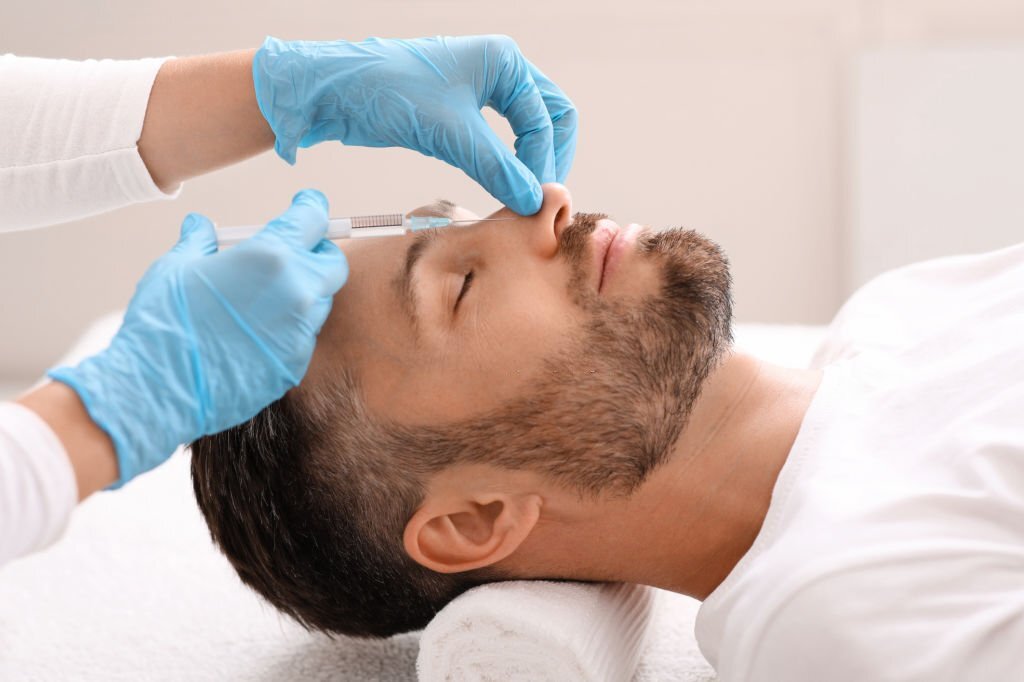
There are two primary nose surgery approaches: open and closed.
Closed rhinoplasty involves making two small incisions inside each nostril, leaving no visible scar.
Open rhinoplasty involves small incisions made on the columella and inside each nostril, which allows your surgeon full access to your nose framework.
Which process used depend on your anatomy, desired result, and surgeon’s technique.
The surgical process for rhinoplasty typically involves the following steps:
- Anesthesia is given to keep you comfortable and pain free during the procedure.
- The surgeon will use a pen to draw guidelines indicating modified areas.
- Following reshaping, the incision is closed with dissolvable stitches.
- Nose is secured with a cast or splint, wearable for the first week.
Duration
Rhinoplasty surgery, is typically 1 to 2 hours and more complex cases may require slightly longer operating times.
Critical factors ensuring a successful outcome are the surgeon’s experience and skill level and their artistic eye. The surgeon must carefully analyze and plan modifications needed to achieve the best result based on each patient’s unique facial anatomy.
Risks
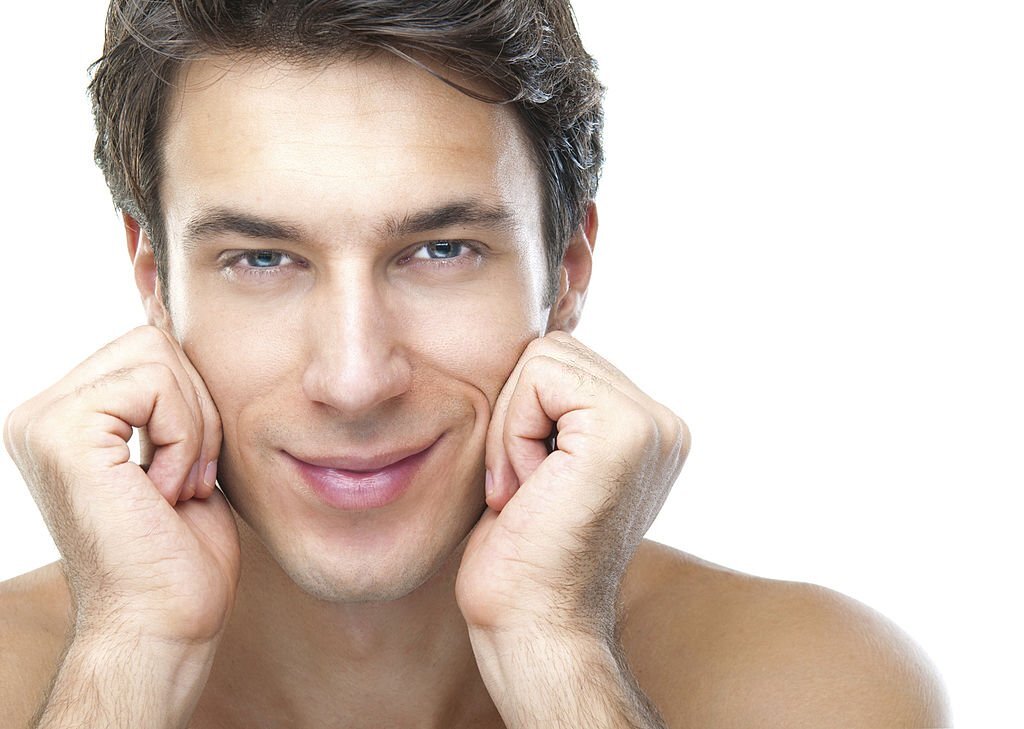
A 2020 study found the incidence of major complications in rhinoplasties to be only 0.7%. According to top plastic surgeons, the most common risks associated with a rhinoplasty procedure include:
- Nosebleeds
- Septal perforation
- Worsened breathing
- Altered sense of smell or taste
- Skin discoloration
Nosebleeds are the most dangerous risk, occurring in 1-3% of patients and require immediate medical attention. Other risks are less dangerous and more annoying, with some requiring a secondary procedure to correct the issue.
The likelihood and severity of these risks depend on the individual patient, their medical history, and the surgeon’s expertise.
Rhinoplasty, like any surgical procedure, involves risk and side effects. When performed by an experienced surgeon, it is considered a safe surgery.
Accelerating Rhinoplasty Recovery
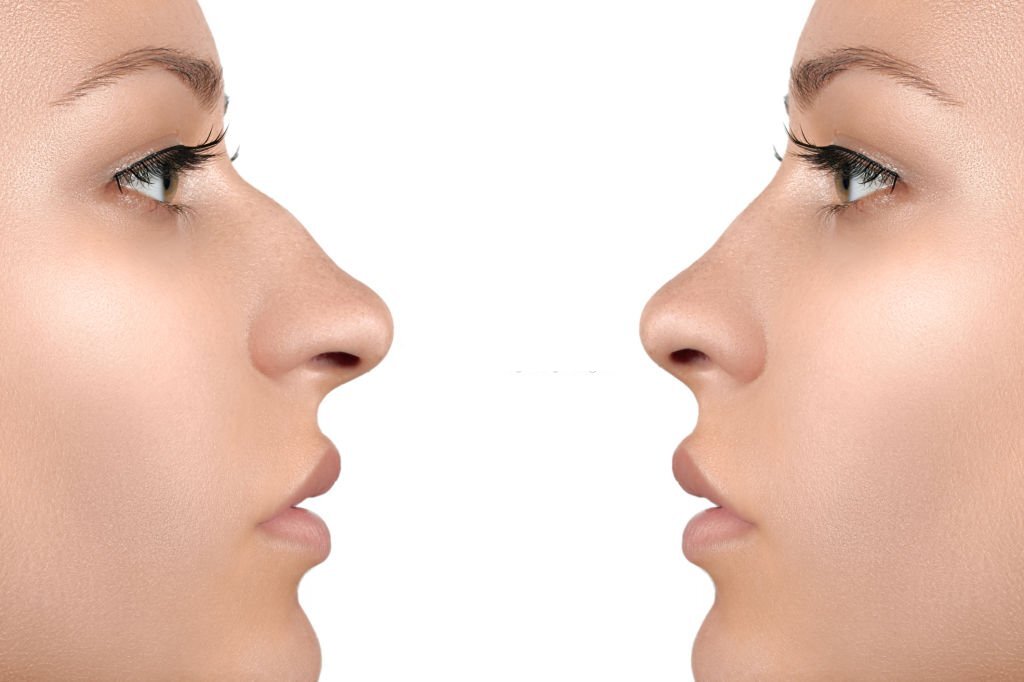
If you’re considering rhinoplasty, or nose job surgery, it’s important to understand the recovery process. Rhinoplasty can be a life-changing procedure, but it does require some downtime to ensure optimal healing and the best possible results.
Here’s what you need to know about rhinoplasty recovery, including how to speed up the healing process.
How Long Does Rhinoplasty Take to Heal?
Most patients are back to work within 10 days. Anticipate two weeks to fully heal. Expect swelling, bruising, and a stuffy nose feeling, but not necessarily pain.
Tips for Rhinoplasty Recovery
Want to speed up your rhinoplasty recovery? There are several things you can do to help reduce swelling and promote healing.
- Sleeping Position. Sleep on your back with your head elevated on a couple of pillows post-op to reduce swelling. Avoid bumping your nose.
- Ice and Arnica. Ice nose with cool compresses or light ice packs almost continuously for the first 48 hours to reduce swelling. Applying topical arnica gel or cream and taking bromelain supplements further aids with swelling.
- Diet. Eating a soft, bland diet of low-sodium broth or a light homemade soup, applesauce, mashed potatoes, or other soft foods for the first day or two is helpful. Avoid spicy or salty foods for a week, as they can increase swelling and bruising.
- Nose Taping. Taping your nose at night reduces swelling. Placing a single strip of tape just above the nose tip or tape under the columella and gently squeezing tape around the nose sidewalls.
Other Tips
- No wearing glasses for the first month or two.
- Avoid ibuprofen or naproxen for one week.
- Avoiding blowing your nose for at least a week.
- Avoiding strenuous activities for the first few weeks.
- Avoid sports where you might get injured for three months.
Rhinoplasty can be a life-changing procedure, but to ensure the best possible results the recovery process must be taken seriously. If you have any concerns during your recovery, be sure to contact your surgeon.
Swelling
Swelling after rhinoplasty is dependent on the type of rhinoplasty performed, the thickness of the skin, and the extent of alteration required to the nasal tip.
- Two weeks: Swelling and bruising will have diminished enough to return to work or run errands.
- Three months: Nose shape and size will be apparent, with most swelling in the upper third resolved.
- 6 months: 90% of swelling gone.
- 1 -3 years post-op may be required for all swelling to resolve, especially in the tip, which can take the longest time to heal and mold to the new framework.
Cleaning
Before cleaning your nose after rhinoplasty…
Always follow your surgeon’s specific post-operative care instructions.
Clean your nose gently and carefully after rhinoplasty, using saline sprays or hydrogen peroxide-soaked Q-tips to help remove any dried blood or mucus.
Be gentle and avoid picking or scratching at scabs or stitches, as this will disrupt the healing process and potentially cause infection.
Antibiotic ointment or Vaseline may be applied to the affected areas to help moisturize and protect the skin following cleaning.
Avoid blowing nose for the first week as this can disrupt the healing process and potentially cause bleeding.
If you experience fever, increased pain, redness, warmth, or drainage, be sure to follow up with your surgeon right away.
Results from Rhinoplasty
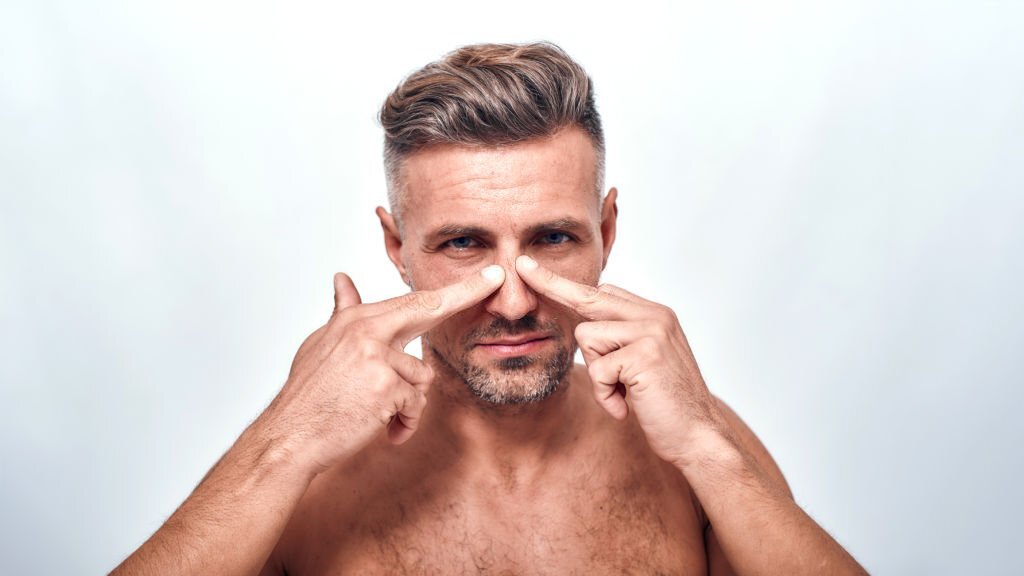
Surgical rhinoplasty results are permanent. Longevity varies based on the patient’s natural aging process, weight fluctuations, and gravity over time.
Some patients desire revision surgery to address new concerns or changes that have occurred since their initial procedure.
Ultimately, results depend on individual factors and the specific techniques used by the surgeon.
Procedures to Consider Alongside Rhinoplasty
Other cosmetic procedures are frequently performed alongside rhinoplasty, to further improve one’s facial features.
These include:
Chin Implant/Augmentation: Frequently patients dissatisfied with their nose, believe their chin lacks prominence, causing an imbalance in facial harmony.
Chin implants offer a symmetrical and proportional appearance for patients who feel their nose sticks out. Rhinoplasty combined with a chin implant is designed to bring balance and harmony to the face, resulting in some of the highest satisfied rates.
Facelift: A facelift reduces aging signs in the face, by tightening sagging skin and removing wrinkles. When combined with rhinoplasty, a facelift seeks to provide a comprehensive facial rejuvenation.
Eyelid Surgery: (Blepharoplasty) is designed to rejuvenate droopy or puffy eyelids. Performed alongside rhinoplasty it creates a more youthful and alert appearance.
Lip Augmentation enhances the shape and size of your lips, creating an attractive and youthful appearance. Lip augmentation combined with rhinoplasty provides a balanced and harmonious result.
Click here to view doctor’s before and after gallery.
Focus on pictures of people who look like you and have the kind of result you’re after.
Sources & studies
Get A Quote
Book an Appointment
Reviews
They recommended a crown and put it in without complications. They charged me exactly what they said they would and did not insist on trying to sell me another treatment, like so many dentists in the U.S. do…I’m sorry but it so true.
I will definitely be back! Thank you Hebedoc!
That's service and priority to someone in pain. Dr. Diaz took the proper conservative and cost- effective pathway to eliminating my pain and discomfort. So thankful to find such dedication and quality. Very good people, very helpful, doing good work!
Thank you for what you do and how you do it, superior patent care exits and is flourishing with the entire team. Highly recommended traveling to Tijuana. I’ve come to think of it as visiting the south side of San Diego, it’s that close!
Will definitely recommend, 10/10
